|
The
international
wine challengeóreborn
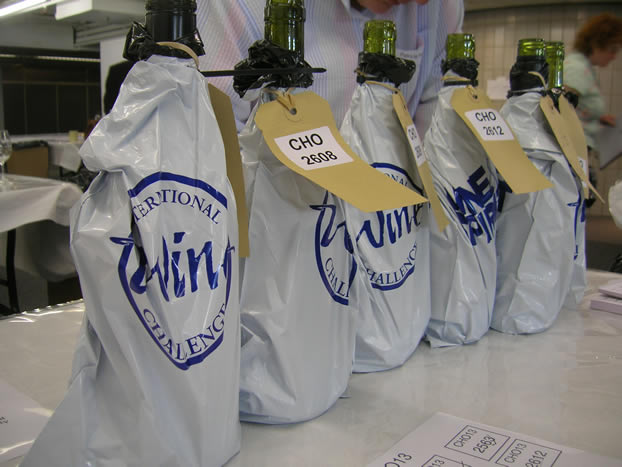
While the International Wine Challenge (IWC) has been
tremendously successful over the last decade or so, it hasnít been
without its critics. Indeed, Iíve been one of them. The problem?
Well, some of the wines receiving gold medals and trophies have been
big, commercially successful wines without much in the way of
personality. You can only judge a competition like this by its
results, and the results in terms of medal winning stickers on
bottles, didnít really seem to be a good guide to consumers of which
were the worthy bottles on retailersí shelves.
But with the purchase of the IWC by William Reed,
publishers of Off Licence News, things have changed. I took part in
this yearís challenge as a senior judge, and had a look behind the
scenes. Have the changes improved the IWC, and should we take the
results more seriously now?
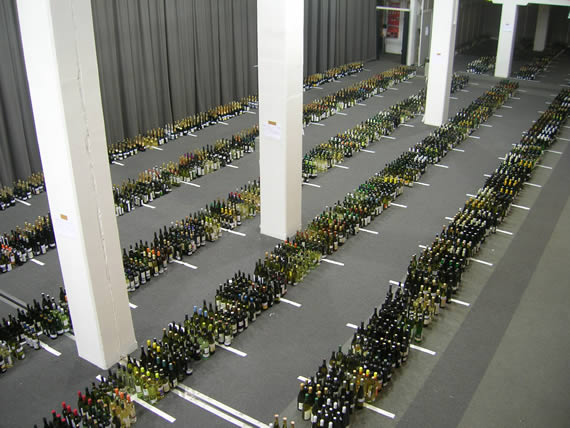
Around 10 000 wines are entered annually for the IWC,
from around the globe. To receive all these, catalogue them accurately
and then taste them within a two-week time frame is a logistical
challenge. To meet this, the traditional format has been to use teams
of three or four tasters, each working through some 120 wines a day,
grouped in flights. But how do you standardize these teams? How do you
make sure there is consistency and competence across all tasters?
The traditional response has been to have a group of
superjurors who then retaste everything to make sure no duds are put
through and no good wines are rejected. But the team of superjurors
has been quite large, itself creating questions about standardization.
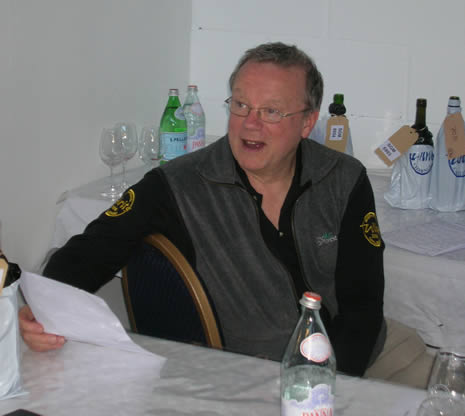 One
of the changes this year has been that the superjuror team has been
abolished. Instead, the team running the IWC has been expanded from
three to four. Derek Smedley MW and Charles Metcalfe (right)
have been joined by Sam Harrop MW and Tim Atkin MW; Robert Joseph has
stepped down. Now, all wines go past this group of four, who all know
each othersí palates pretty well. This adds a vital layer of
consistency to the whole process which wasnít there before. The
addition of Tim and Sam, two of the brightest lights in the current UK
wine scene, is a significant one. One
of the changes this year has been that the superjuror team has been
abolished. Instead, the team running the IWC has been expanded from
three to four. Derek Smedley MW and Charles Metcalfe (right)
have been joined by Sam Harrop MW and Tim Atkin MW; Robert Joseph has
stepped down. Now, all wines go past this group of four, who all know
each othersí palates pretty well. This adds a vital layer of
consistency to the whole process which wasnít there before. The
addition of Tim and Sam, two of the brightest lights in the current UK
wine scene, is a significant one.
Another fundamental change this year is that every wine
that is entered gets tasted in the first week. The first week is the
time where wines are tasted with a view to filtering out the medal
winners from the rest. In the past, wines that had received a medal
the previous year got a bye to the final round of judging (albeit in
follow-on vintage), where the decision is centred on which type of
medal the wine will get. In the reborn IWC, everything gets tasted
together in the first week, with no byesóthe playing field is thus
levelled.
I tasted this year for a day, with the rank of senior
judge, which means you have responsibility for one of the tasting
teams. Hereís how the day went. Arrival was at 9.30 am, with coffee
and a chance to catch up with fellow tasters. Because of the profile
of the IWC, it attracts many key people in the wine industry, with
foreign winemakers and journalists joining the UK contingent. So as
well as a tasting exercise, itís a welcome chance to catch up with
familiar faces and to make some new connections.
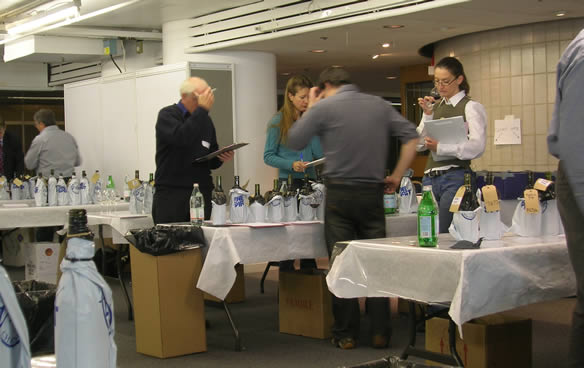
By 10 am, we are sorted into tasting teams. I was with
a German winemaker from Franconia and an enthusiastic UK amateur
taster, and we began work with a flight of white wines (I canít
remember what they were; it was a long day). We tasted through the
dozen wines, making notes, and then compared our opinions. Because
this was the first week of tasting, our job was simply to decide
whether the wines were worthy of a medal (in which case they would be
tasted by a similar panel the following week), worthy of a seal of
approval, or were voted out. Remarkably, our opinions diverged
relatively little, and it was an easy process reaching consensus on
most. I imagine this was similar for most of the tasting teams.
As the panel leader, there were just two instances over
the whole dayís tasting where I disagreed with my fellow tasters
enough to call in a third opinion from one of the four top dogs. In no
instance did I have to over-ride the panel, which was reassuring.
Where a wine was clearly faulty, we called for a back-up. Of some 120
wines, there were just a couple of corky bottles and one which showed
a remarkable taint that I identified (loosely) as geosmin, with a
beetrooty, freshly turned earth character.
Everything we tasted went back to the four super-dudes,
who retasted a heroic number of wines. Of course, with a diversity of
tasters like those employed by the IWC, some panels will mark soft and
some will mark hard. Judging wines requires a good degree of
competence, and not everyone in the wine trade possesses the required
level of tasting ability. Thus it is inevitable that the super-dudes
will pick up some wines that have unfairly been rejectedóthatís
their job.
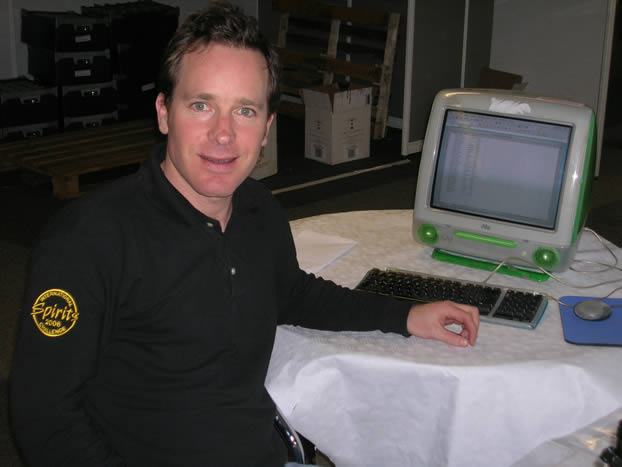
In addition, Sam Harrop (pictured above) was
charged with the task of assessing the wines identified as faulty.
This is a vital role, and I canít think of anyone better quipped for
the task than Sam, who is an expert on reduction, brettanomyces, cork
taint and all manner of association venous defects. The data resulting
from this rigorous assessment will be extremely valuable. Iíll
report back when I find out more about this.
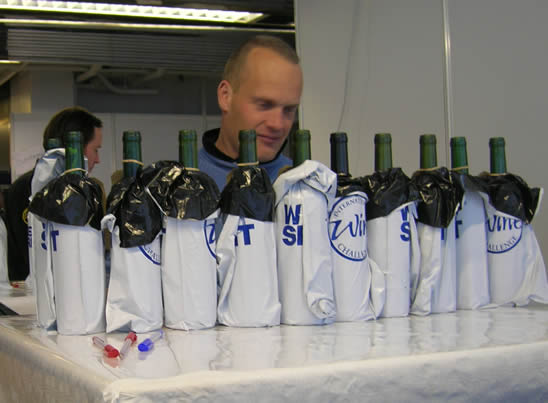
Tim Atkin MW hard at work
So, from what Iíve seen, have I got confidence in the
results? In short, yes. The IWC has been tightened up and
professionalized, and as much as it is possible for a blind tasting
competition on this scale to get it right, I reckon the results are
worth noting. Of course, not all classed growth Bordeaux or grower
Burgundies will be represented in this sort of competition; its focus
is largely on commercially available wines. But with the new rigour of
the IWC, medals awarded will mean something, and as such are likely to
be a useful guide to consumers. Itís interesting to see that Tim
Atkin MW has nailed his colours to the mast; as a leading journo he
might in the past have been one of the critics of a competition such
as this. Now heís on the inside, and I expect heíll be very keen
to ensure the integrity of the judging process, not least because this
competition will from here on be linked closely to him.
The results of the 2006 IWC are now available from www.wineint.com
Published
May 2006
Back to top
|

